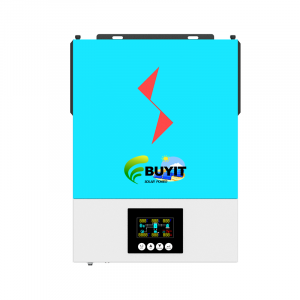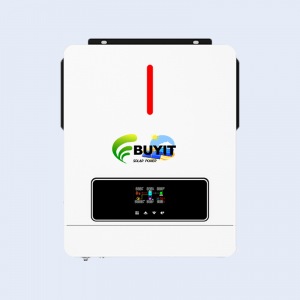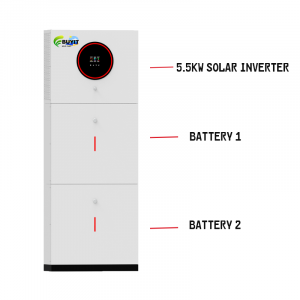What is the difference between a low frequency inverter and a high frequency one? Which is better for solar system uses?
The primary differences between low-frequency inverters and high-frequency inverters lie in their design, efficiency, size, and application suitability, particularly in solar systems. Here’s a breakdown:
Low-Frequency Inverters
- Operating Frequency: Typically operate at a frequency of 50 Hz to 60 Hz.
- Design: Use a transformer to step up or step down voltage, which makes them bulkier and heavier.
- Efficiency: Generally less efficient than high-frequency inverters, especially at lower loads.
- Output Waveform: Often produce a modified sine wave or pure sine wave.
- Durability: More robust and can handle surges better, making them suitable for heavy-duty applications.
- Applications: Commonly used in industrial applications and large power systems.
High-Frequency Inverters
- Operating Frequency: Operate at a frequency of 20 kHz to 100 kHz or higher.
- Design: Use a high-frequency transformer and are more compact and lightweight.
- Efficiency: More efficient than low-frequency inverters, particularly at varying loads.
- Output Waveform: Usually produce a pure sine wave, which is better for sensitive electronics.
- Durability: Less robust compared to low-frequency inverters, but advancements have improved their reliability.
- Applications: Commonly used in residential and commercial solar systems due to their size and efficiency.
Which is Better for Solar Systems?
- High-Frequency Inverters are generally better suited for solar systems. Their compact size, higher efficiency, and ability to produce a pure sine wave make them ideal for residential applications and smaller installations. They are also better at handling the variable loads typical in solar power systems.
- Low-Frequency Inverters can still be used in larger, industrial solar applications where durability and surge handling are critical, but they are often overkill for typical residential setups.
Conclusion
For most solar system uses, especially residential, high-frequency inverters are preferred due to their efficiency, size, and ability to work well with modern electronics.
inverters have to produce AC that things can use.
the frequency is not arbitrary
in usa it is 60 hz period end of story
—
Which is better? A “low frequency” & “high frequency” inverter?
Power inverter has two types: Low frequency and High-frequency power inverter.
off-grid inverter is simple which convert the DC power stored within a battery (direct current, 12V, 24V or 48V) into AC power (alternating current, 230-240V) that can be used to run your household items and electrical appliances, from fridges to televisions to mobile phone chargers. Inverters are an essential item for anyone without access to a mains power source, as they can easily provide a plentiful amount of electricity.
Low-frequency inverters have the advantage over high-frequency inverters in two fields: peak power capacity, and reliability. Low-frequency inverters are designed to deal with higher power spikes for longer periods of time than high-frequency inverters.
In fact, low-frequency inverters can operate at the peak power level which is up to 300% of their nominal power level for several seconds, while high-frequency inverters can operate at 200% power level for a small fraction of a second.
The second main difference is reliability: low-frequency inverters operate using powerful transformers, which are more reliable and sturdy than the high-frequency inverter’s MOSFETs, which use electronic switching and more prone to damage, particularly at high power levels.
In addition to these qualities, low-frequency inverters come with a wide range of technical features and capabilities which most high-frequency inverters lack.


